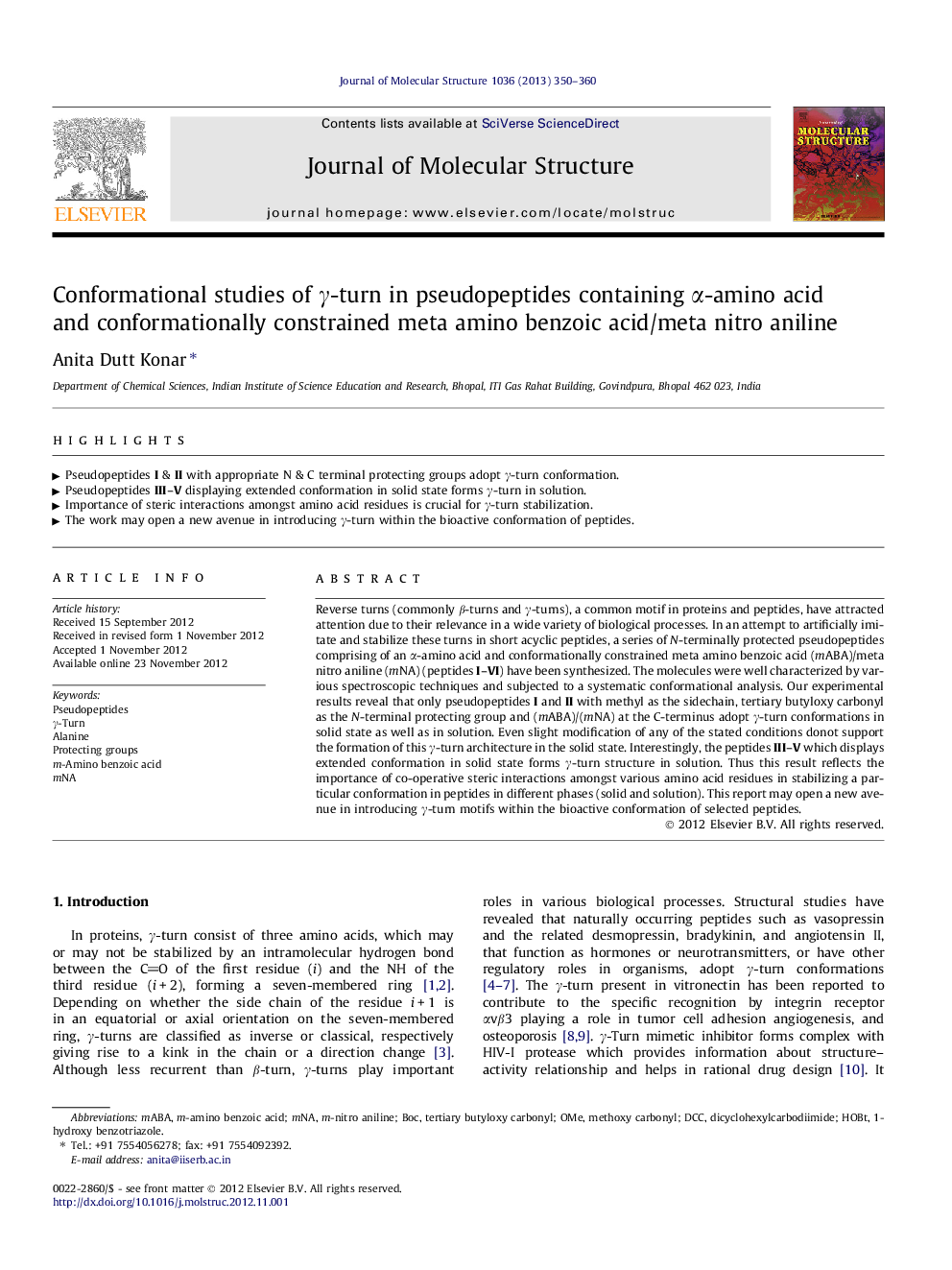| Article ID | Journal | Published Year | Pages | File Type |
|---|---|---|---|---|
| 1406149 | Journal of Molecular Structure | 2013 | 11 Pages |
Reverse turns (commonly β-turns and γ-turns), a common motif in proteins and peptides, have attracted attention due to their relevance in a wide variety of biological processes. In an attempt to artificially imitate and stabilize these turns in short acyclic peptides, a series of N-terminally protected pseudopeptides comprising of an α-amino acid and conformationally constrained meta amino benzoic acid (mABA)/meta nitro aniline (mNA) (peptides I–VI) have been synthesized. The molecules were well characterized by various spectroscopic techniques and subjected to a systematic conformational analysis. Our experimental results reveal that only pseudopeptides I and II with methyl as the sidechain, tertiary butyloxy carbonyl as the N-terminal protecting group and (mABA)/(mNA) at the C-terminus adopt γ-turn conformations in solid state as well as in solution. Even slight modification of any of the stated conditions donot support the formation of this γ-turn architecture in the solid state. Interestingly, the peptides III–V which displays extended conformation in solid state forms γ-turn structure in solution. Thus this result reflects the importance of co-operative steric interactions amongst various amino acid residues in stabilizing a particular conformation in peptides in different phases (solid and solution). This report may open a new avenue in introducing γ-turn motifs within the bioactive conformation of selected peptides.
► Pseudopeptides I & II with appropriate N & C terminal protecting groups adopt γ-turn conformation. ► Pseudopeptides III–V displaying extended conformation in solid state forms γ-turn in solution. ► Importance of steric interactions amongst amino acid residues is crucial for γ-turn stabilization. ► The work may open a new avenue in introducing γ-turn within the bioactive conformation of peptides.
